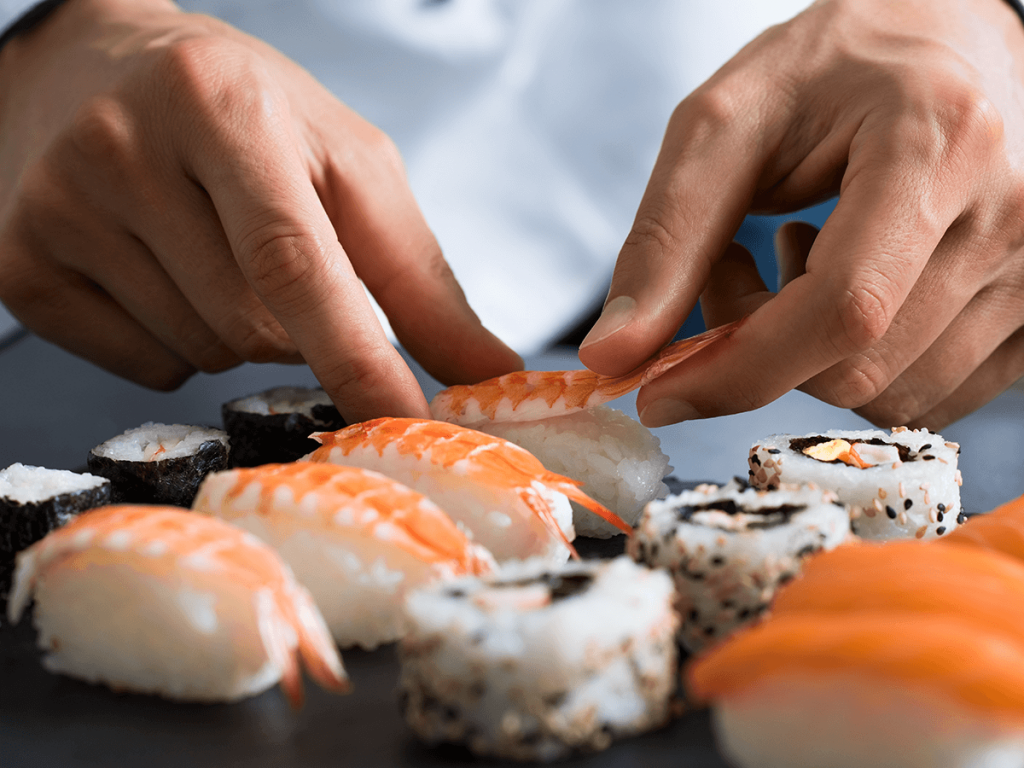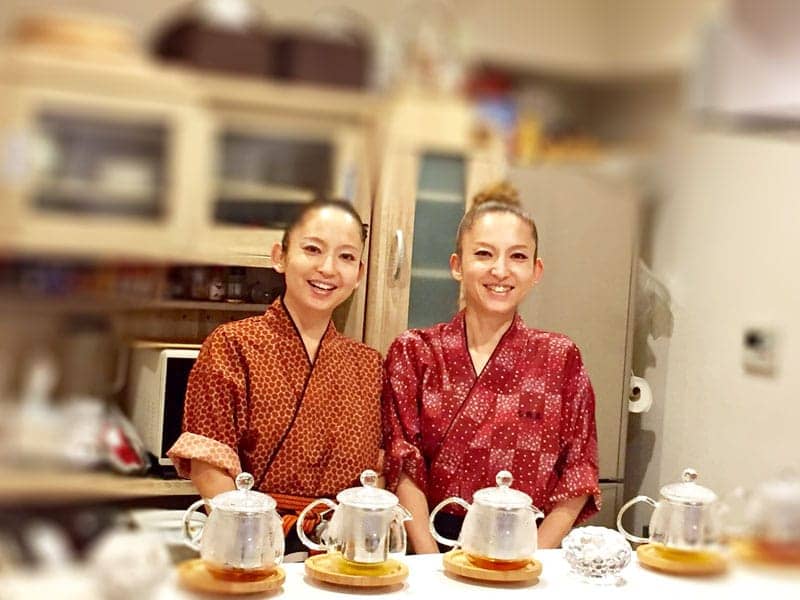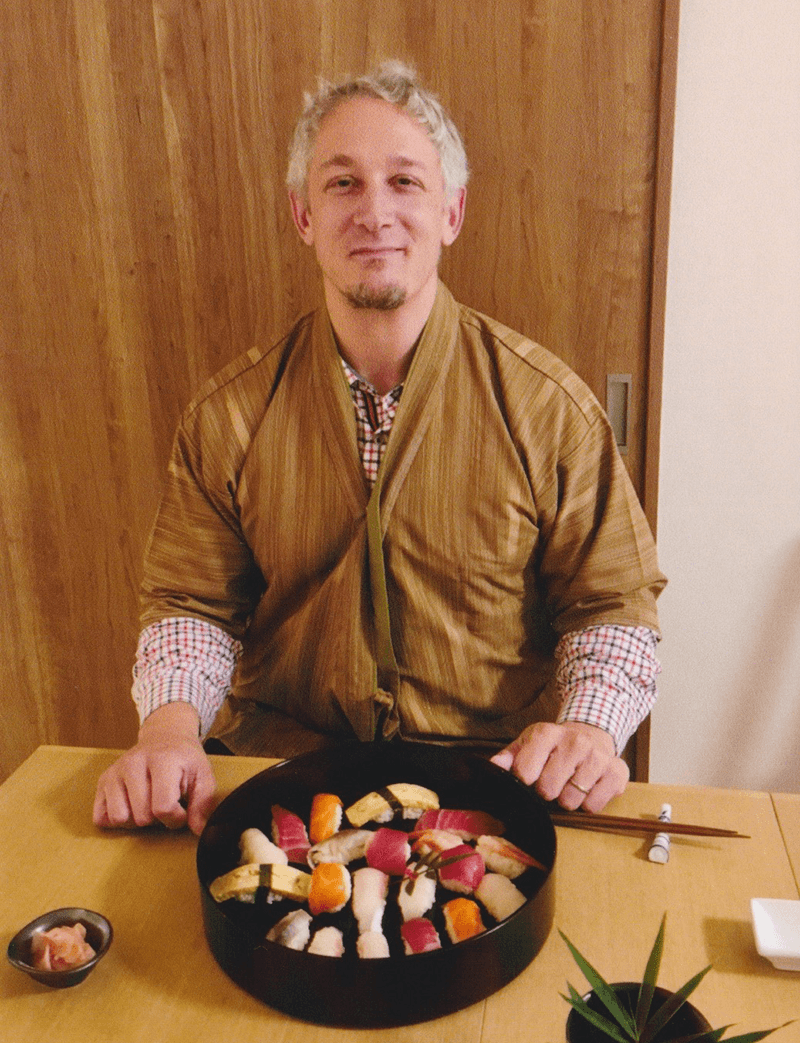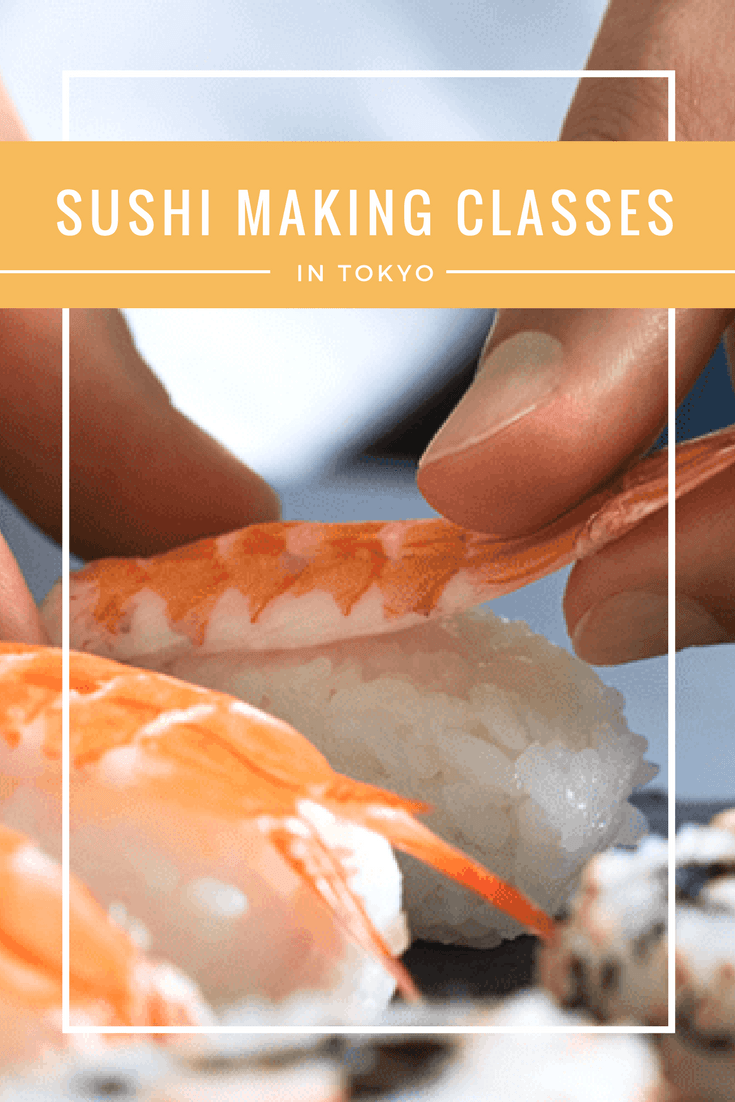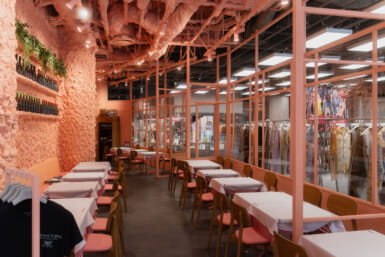Sushi is probably one of the first things that comes to mind when you think about Japanese food, and it’s also one of the kinds of food that makes you say to yourself, “OK, there’s no way that I’m going to try to make this myself. Don’t you have to train for years before you can even make a single piece correctly? There’s no way I could do this.”
At least that’s what I said to myself when I was getting ready to go to my first sushi making workshop.
It turns out that I didn’t really need to be worried, and while I wasn’t likely to be hired as a sushi chef any time soon, during my course at Japan Cross Bridge, I found that making rolls and nigiri that I was more than happy to eat was relatively easy, and a lot of fun.
Japan Cross Bridge is a company that is run by twin sisters Shihomi and Ayumi, who worked together at a sushi restaurant in Geneva, Switzerland, for three years before moving back to Japan, where they both worked at a sushi restaurant in Tokyo’s Toranomon neighborhood for seven years. They just launched the classes earlier this year, which are meant to make it easy for English speakers to learn more about Japanese culture and cooking.
The classes take place at Ayumi’s apartment, so to lead the way, Shihomi and Ayumi greeted me at Meguro Station, holding up a sign reading “Sushi Lover?”, so there’s no way you’ll miss them. From there, it was a short walk to Ayumi’s light and bright kitchen and dining room.
Before we got started, I watched a short presentation that explained some of the techniques that I’d use to make sushi. There was also a brief lesson about the history of sushi, and some of the unique vocabulary that is used in sushi restaurants. For example murasaki (purple) is the word for soy sauce, and shari (sometimes translated as “Buddha’s bones”) is the word for sushi rice.
After the presentation, I donned my samue, or traditional top, and got down to work. The first part of the course was making maki (rolls). This is a good way to get started, as it’s a little easier to make this type of roll than it is to make nigiri sushi. To make the rolls, you lay the seaweed out flat, spread out a layer of rice, and then add the fish and other ingredients. You then use a flexible bamboo mat to roll up the ingredients, and then cut the long roll into bite sized pieces. During this part of the course, you make both standard roll sushi and inside out rolls, where the rice faces outside.
We then moved on to the more difficult task of making nigiri sushi – the pieces where the fish sits on top of the rice. At first, I had to admit I was worried that my nigiri weren’t going to turn out very well, but after a few pointers to reinforce what I’d learned from the presentation – Ayumi and Shihomi are both great teachers – and a bit of practice, my nigiri started to look pretty passable. I began to get the hang of shaping the rice into just the right shape and pressing the fish around the rice, and as the tray where I was putting my finished pieces filled up, the time started to fly by.
Of course, the best part of making all of this sushi – aside from the sense of accomplishment, of course – is getting to eat it. And after working up an appetite, I was ready to do just that. In my own humble esteem, I’d rank my work as better than what I could get at the supermarket – which was better than I’d expected to do going in!
The final experience was a tea tasting course featuring five different kinds of Japanese tea – houjicha (roasted green tea), genmai cha (tea with roasted rice) gobo cha (burdock root tea), mugi cha (barley tea, and soba cha (buckwheat tea). Each one had a uniquely distinct flavor, and it was a pleasure to be able to sample each one on its own, along with a traditional sweet.
Upon completing my course, I got a picture of me and my sushi to take back with me, and a certificate. I walked away from the experience not only happily stuffed, but also happy to have learned a little more about one of Japan’s most iconic foods.
Japan Cross Bridge offers classes for individuals and groups. For more information, visit their website at http://japancrossbridge.com/ or check out their reviews on TripAdvisor.
Main Image: Shutterstock

